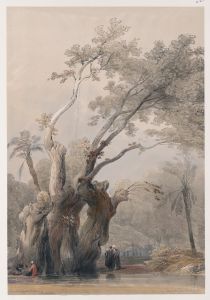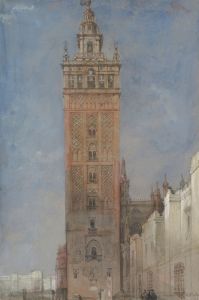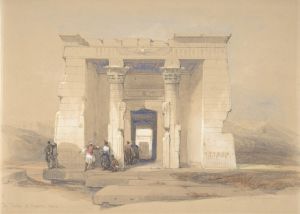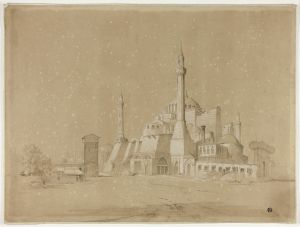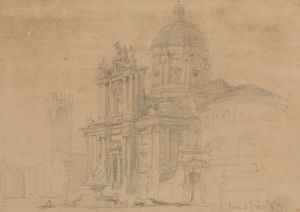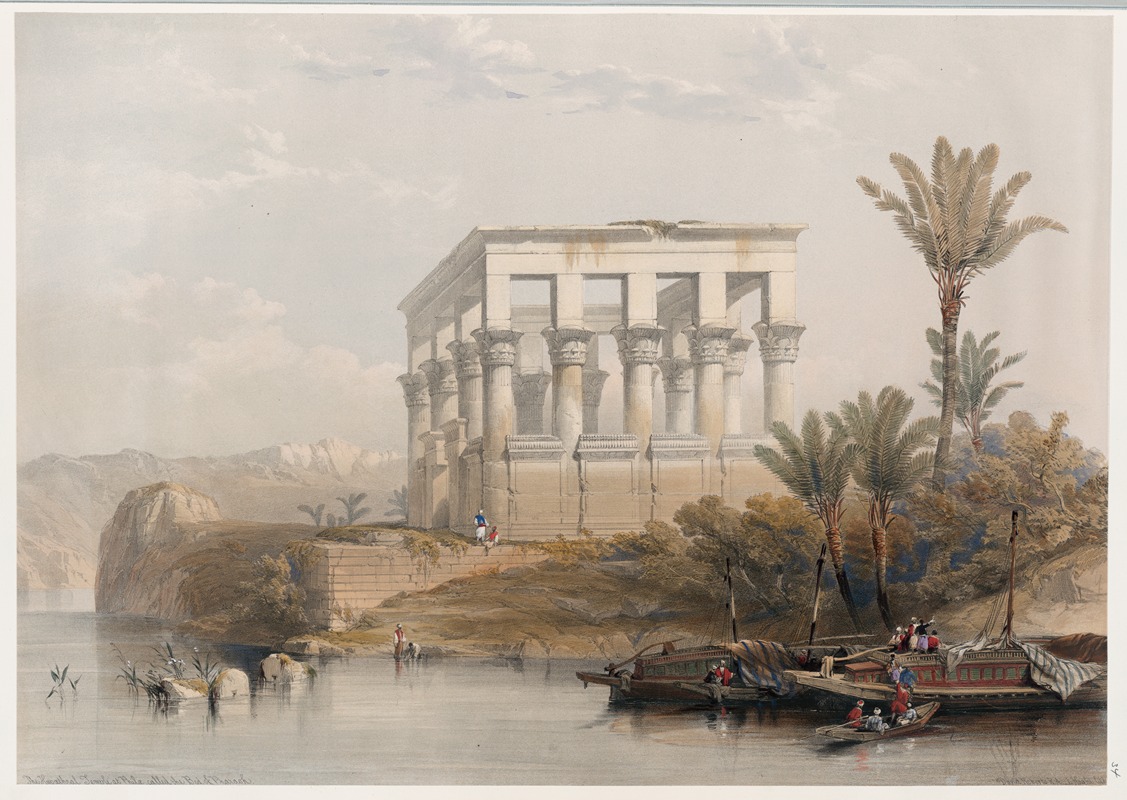
The hypæthral temple at Philæ called the Bed of Pharaoh.
A hand-painted replica of David Roberts’s masterpiece The hypæthral temple at Philæ called the Bed of Pharaoh., meticulously crafted by professional artists to capture the true essence of the original. Each piece is created with museum-quality canvas and rare mineral pigments, carefully painted by experienced artists with delicate brushstrokes and rich, layered colors to perfectly recreate the texture of the original artwork. Unlike machine-printed reproductions, this hand-painted version brings the painting to life, infused with the artist’s emotions and skill in every stroke. Whether for personal collection or home decoration, it instantly elevates the artistic atmosphere of any space.
"The hypæthral temple at Philæ called the Bed of Pharaoh" is a lithograph created by the Scottish artist David Roberts in the 19th century. This artwork is part of Roberts' renowned series of illustrations depicting scenes from Egypt and the Near East, which were published in the monumental work The Holy Land, Syria, Idumea, Arabia, Egypt, and Nubia. The series was produced between 1842 and 1849 and is celebrated for its detailed and romanticized portrayal of historical and architectural landmarks.
The lithograph depicts a structure on the island of Philae in southern Egypt, known as the "Bed of Pharaoh." This name is a colloquial term for the small hypaethral (open to the sky) temple located on the island. The temple is believed to have been dedicated to Hathor, the ancient Egyptian goddess of music, love, and joy. Philae itself was a significant religious site in ancient Egypt, particularly during the Ptolemaic and Roman periods, and was associated with the worship of the goddess Isis.
David Roberts visited Egypt during his travels in 1838–1839, where he sketched numerous sites and monuments. His works were later transformed into hand-colored lithographs by Louis Haghe, a prominent lithographer of the time. These lithographs were widely acclaimed for their artistic quality and historical value, offering European audiences a glimpse of the grandeur of ancient Egyptian civilization.
The "Bed of Pharaoh" lithograph captures the architectural elegance of the temple, set against the dramatic backdrop of the Nile River and surrounding landscape. Roberts' depiction emphasizes the interplay of light and shadow, highlighting the intricate details of the temple's columns and carvings. The artwork reflects the 19th-century European fascination with Egyptology and the rediscovery of ancient Egyptian monuments.
The island of Philae, including its temples, was later relocated during the 20th century as part of the UNESCO-led Nubian Monuments Campaign to save historical sites from flooding caused by the construction of the Aswan High Dam. The temples were moved to the nearby island of Agilkia, where they remain a popular tourist destination.
David Roberts' lithographs, including "The hypæthral temple at Philæ called the Bed of Pharaoh," continue to be valued for their artistic merit and as historical records of Egypt's architectural heritage during the early 19th century.





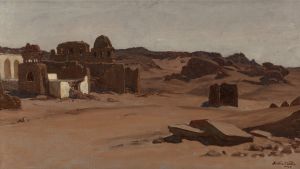
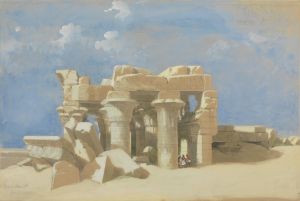
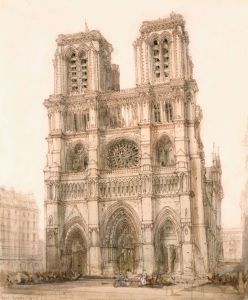
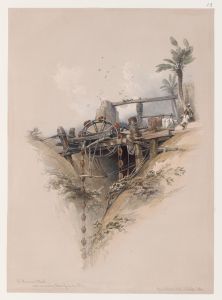
![Interior of the mosque of the Metwalys [Metwalis].](/imgs/217497/s/david-roberts-interior-of-the-mosque-of-the-metwalys-metwalis-d41ed7bd.jpg)
![One of two colossal statues of Rameses [sic] II. Entrance to the Temple at Luxor.](/imgs/217522/s/david-roberts-one-of-two-colossal-statues-of-rameses-sic-ii-entrance-to-the-temple-at-luxor-473c42e1.jpg)
![Temple of Wady Saboua [Wadi al-Sabua], Nubia.](/imgs/217551/s/david-roberts-temple-of-wady-saboua-wadi-alsabua-nubia-52e62db.jpg)
